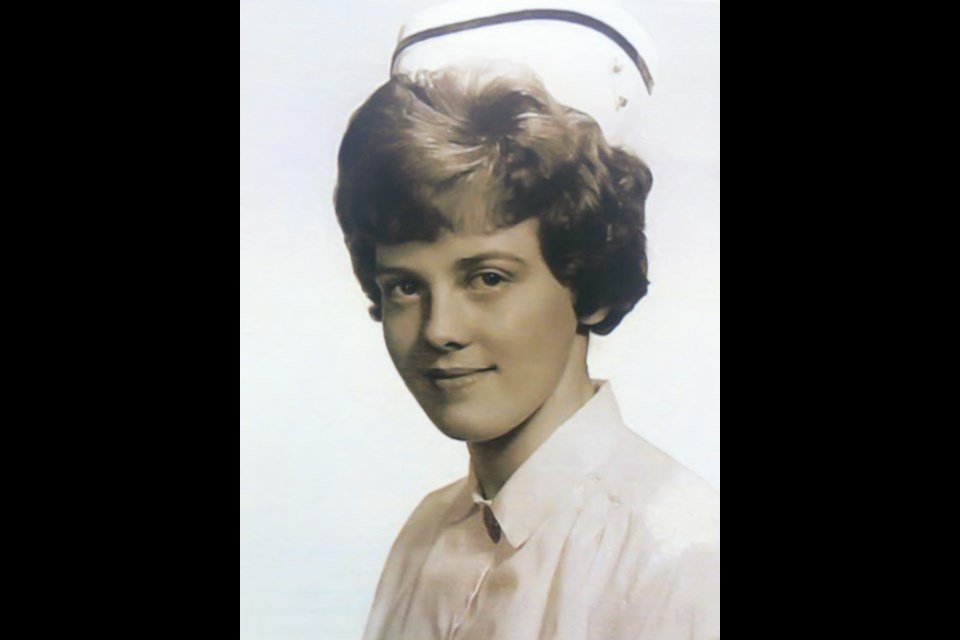It wasn’t easy being the first Nurse Practitioner.
In 1974 Karen Scott had been working as a nurse at the still fairly new Group Health Centre (GHC) for six years.
Thinking of innovative ways to cut down on patient wait times, the GHC enrolled Scott in a brand new, and somewhat provocative, ‘nurse practitioner’ program at the University of North Carolina.
The idea was that if nurses could take on tasks like routine checkups, it would free-up doctors to handle more difficult patients.
Although the state run school normally wouldn’t accept out-of-state, let alone out-of-country students, strings were pulled and GHC got her in.
By 1975 Scott graduated, becoming first Nurse Practitioner (NP) in the Sault, and easily one of the first in Canada.
Locally, controversy erupted.
At that there was already a battle between ‘downtown’ solo-physicians and those at the ‘uptown’ GHC.
GHC was considered a cutting edge medical resource and the smaller physician practices downtown saw it as a threat and advocated that people would receive inferior care there.
When Scott began as an NP at the GHC, it didn’t help.
People said nurses couldn't provide care on their own.
“There were write ups in Sault Star and by The College of Physicians and Surgeons about the inferior care people received from Nurse Practitioners. The government wasn’t sure about us; were we really doing the best we could for our patients? There were suspicions. Were we really substituting secondary care for good quality care? Of course we weren’t,” said Scott
Nurses at GHC were supportive, but not those at the hospital.
When patients were admitted to the Sault General Hospital after seeing Scott, the nurses there would laugh at the mention of her name.
“They used to make fun of me and call me ‘Dr. Scott’, which I had to correct, and basically their attitude was, ‘well I do what she does, why is she special?’ I wasn’t objecting to that, but don’t call me doctor,” said Scott.
It was a time when the NP role was under scrutiny.
Many people were unsure of their role and capabilities.
Fred Griffth, President of the GHC at the time, said the way Scott handled her role was important in the history of NP’s across Canada.
“When Karen graduated, I thought we might have problems with the insurance companies getting her insured against liability and malpractice. The only problem, and Karen straightened it out very quickly, was that they wanted to define her job as ‘minor doctoring’ and she said ‘no, its major nursing’,” said Griffith.
If she failed, it would look bad on NPs as a whole, which could have jeopardized their future.
“Karen took a lot of heat from this. If patients and doctors didn’t accept her, the program would fail. She was really in the spotlight for everything she did,” said Griffith.
In the end the NP role was proved a success and Scott was able to cut wait times down from two weeks to see a regular doctor to often being able to see people that day.
Not only was she considered capable of providing care, said Griffith, many patients, particularly pregnant mothers, preferred her care and expressed disappointment when they were transferred over to a doctor when they were in labour.
Within the first year, Scott had an individual practice inside the GHC.
She basically ran it herself while a physician signed off on everything to make it official.
The main difference between a ‘regular’ nurse and an NP at the time was that an NP could diagnoses and provide treatment.
For example, an NP could do a general physical exam or order an x-ray.
One of her more-common jobs was doing routine physical inspections for people applying for government jobs or to work at Algoma Steel, essentially signing off on clean bills of health.
Her doing those tasks freed up time for doctors to deal with more challenging patients.
Scott was the first NP in the Sault, perhaps all of Northern Ontario, and she’s an important icon in the history of modern Canadian medicine.
Universities, colleges, and government organizations looked at her work as a model of NPs and she helped shape the role as we know it today.
Although hundreds of NPs were working in the country throughout the later 1970s and 1980s it wasn’t until 1998 that the role of NP was given a special classification with the College of Nurses of Ontario, formalizing them as a special group of health professionals.
Scott said that since then, NP’s responsibilities have only increased.
“Basically now NPs can have an individual practice with a physician consultant,” she said.
“Looking back I would do it over again. It was a need and a recognition that nurses offered a quality of care to patients. NPs are now recognized across Canada as offering top notch care,” said Scott, proud of her place in the history of Canadian Medicine.
Scott officially retired on June 30, 2016.
She was an NP for 41 years.
